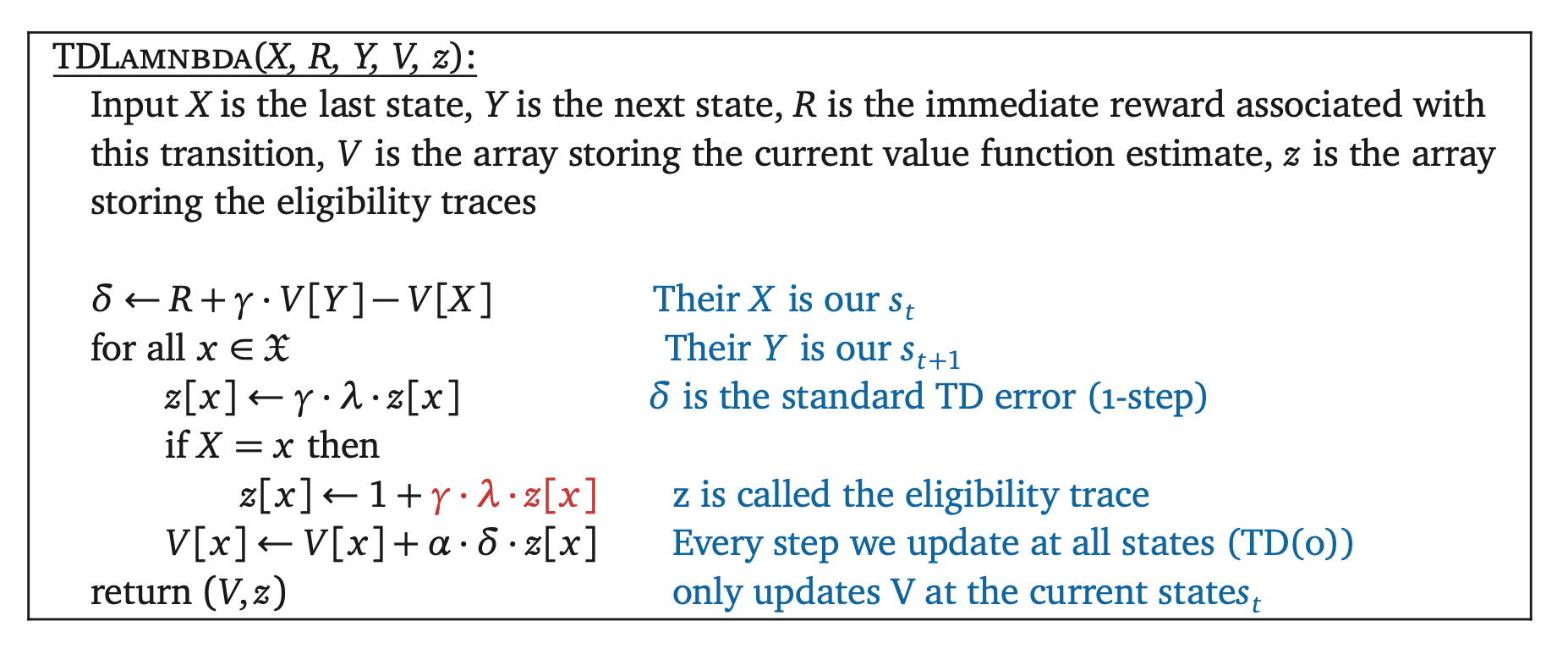Tabular RL for Value Prediction
The value Prediction Problem
Given a policy
Why is it useful? Recall that if we know how to compute
On-policy learning: data is generated by
off-policy learning: data is generated by some other policy
When action is always chosen by a fixed policy, the MDP reduces to a Markov chain plus a reward function over states, also known as Markov Reward Processes (MRP)
Monte-Carlo Value Prediction
If we can roll out trajectories from any starting state that we want, here is a simple procedure
For each
- For episodic tasks, roll out until termination
- For continuing tasks, roll out to a length (typically
- Let
Also works if we can draw starting state from an exploratory initial distribution (i.e., one that assigns non-zero probability to every state)
Keep generating trajectories until we have enough data points for each starting state
Implementing MC in an online manner
- The previous procedure assumes that we collect all the data, store them, and then process them (batch-mode learning)
- Can we process each data point as they come, without ever needing to store them? (online, one-pass algorithm)
More generally,
in theory, convergence require sum of
The expected value of the target is what we want to update our estimate to, but since it’s noisy, we only move slightly to it
Alternative expression:
Moving the estimate in the direction of error (= target - current)
Can be interpreted as stochastic gradient descent
If we have i.i.d. real random variables
- Stochastic gradient:
Every-visit Monte-Carlo
Supose we have a continuing task. What if we cannot set the starting state arbitrarily?
Let’s say we only have one single long trajectory
(By long trajectory, we mean trjectory length >> effective horizon
On-policy:
Algorithm: for each
Convergence requires additional assumptions: the Markov chain induced by
Every-visit Monte-Carlo
You can use this idea to improve the algorithm when we can choose the starting state & the MDP is episodic
i.e., obtain a random return for each state visited on the trajectory
What if a state occurs multiple times on a trajectory?
Approach 1: only the 1st occurrence is used (first-visit MC)
Approach 2: all of them are used (every-visit MC)
Alternative Approach: TD(0)
- Again suppose we have a single long trajectory
in a contunuing task
TD = temperal difference
The same structure as the MC update rule, except that we are using a different targert here:
Often callled bootstrapped target: the target value depends on our current estimated value function
Conditioned on
It’s
Understanding TD(0)
Imagine a slightly different procedure
Initialize
Keep running
Note that only
What’s the relationship between
Copy
TD(0): almost the same, except that we don’t wait. Copy
Algorithms that wait acutally have a come back in Deep RL
TD(0) vs MC
TD(0) target:
MC target:
MC target is unbaised: expectation of target is the
TD(0) target is baised (w.r.t.
Although the expected target is not
On the other hand, TD(0) has lower variance than MC
Bias vs variance trade-off
Also a ptractical concern: when interval of a time step is too small (e.g., in robotics),
1-step bootstrap (= TD(0)):
2-step bootstrap:
3-step bootstrap:
Excerise: What’s the exptected target in n-step bootstrap?
limit
Why the choice of
Enables efficient online implementation
Backward view of

